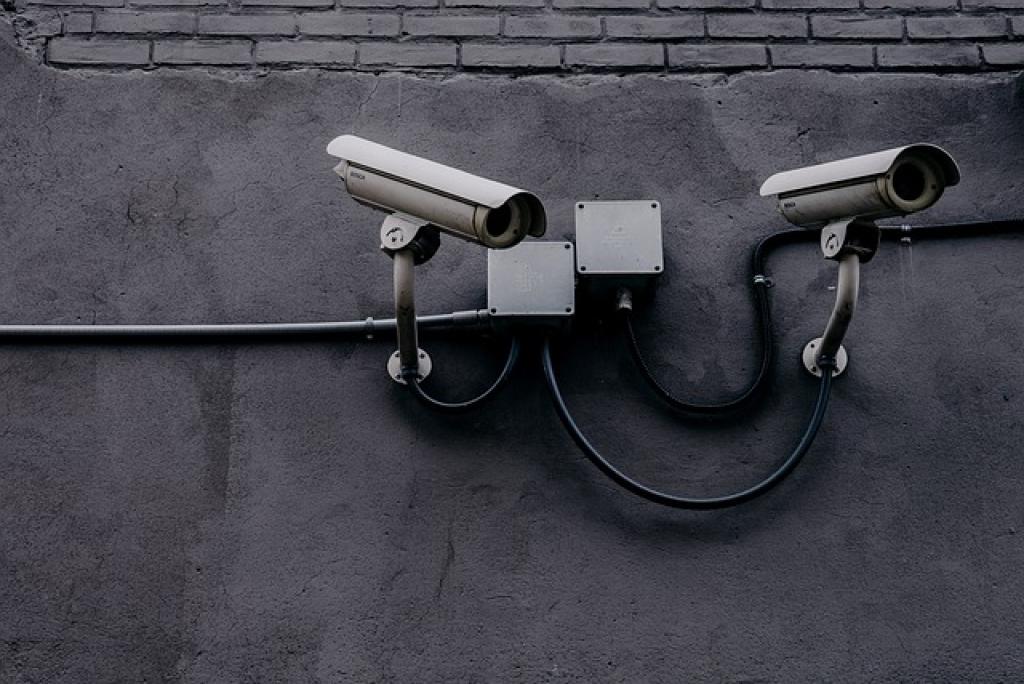
Customized Security Plans for Commercial Properties
Every commercial property is unique, and so are its security needs. From high-rise office buildings to bustling retail spaces, each environment presents distinct challenges and risks. A one-size-fits-all approach to security simply doesn’t cut it.
Imagine the peace of mind that comes from knowing your property is shielded by a robust, tailor-made security plan. Customized security solutions not only enhance protection but also adapt to the evolving needs of your business and its surroundings.
In this fast-paced world, the safety of assets, employees, and clients is paramount. That’s why developing a bespoke security strategy is essential for any proactive business owner. The benefits are clear: increased safety, potential cost savings, and enhanced operational efficiency.
Let’s explore why cookie-cutter solutions fall short and how customized plans can offer the precision your commercial property deserves.
Why Customized Security Plans Are Essential for Commercial Properties
When it comes to securing a commercial property, understanding its specific vulnerabilities is key. Standard security measures often overlook unique characteristics that could expose your property to risks.
Identifying Unique Risks
Each commercial site comes with its own set of threats. Whether you’re dealing with increased foot traffic, high-value inventory, or sensitive customer data, a customized security plan identifies these specific vulnerabilities. By focusing on what makes your property unique, you can implement more effective precautions.
Maximizing Efficiency
Customized plans allow for the optimal placement and use of security technology, personnel, and procedures. Rather than overinvesting in unnecessary equipment or personnel, resources are allocated where they will make the most impact. This targeted approach not only enhances security but can also lead to cost savings over time.
Keeping abreast of the latest security trends and technologies is important, but what truly makes an impact is how these solutions are applied. Tailoring your security strategy to the unique demands of your property ensures you’re not just keeping up with threats but staying a step ahead.
In an ever-evolving landscape of potential threats, a one-size-fits-all strategy just won’t do. Embrace customization for tighter security and greater peace of mind.
Assessing the Unique Security Needs of Commercial Properties
The first step in developing a customized security plan is a comprehensive risk assessment. This involves examining the physical layout, location, and operational elements of the property. Understanding these factors helps pinpoint points of vulnerability.
Understanding the Environment
Consider the neighborhood and surrounding area of your property. Is it prone to certain crimes, or does it host large events that might impact security? Analyzing these environmental factors aids in anticipating potential threats and responding proactively.
Evaluating Current Systems
Take stock of existing security measures. Are current systems adequate, or do they leave gaps? A thorough evaluation highlights areas for improvement, ensuring that both personnel and technology are optimally employed.
Next, involve stakeholders in the assessment process. Gathering insights from employees and tenants can reveal overlooked security concerns. They provide firsthand accounts of operational dynamics and areas of potential risk, offering valuable perspectives.
Finally, review historical security incidents. Learning from past events enables better preparation for future threats. By identifying trends and recurring issues, you can adjust security measures to mitigate these risks effectively.
Through a detailed and inclusive assessment process, commercial properties can build a solid foundation for a tailored, effective security plan.
Key Components to Include in a Custom Security Plan
A well-rounded security plan goes beyond basic surveillance and locks. It combines multiple layers of protection, tailored specifically to the property’s needs to deter threats effectively.
Advanced Surveillance Systems
Modern surveillance solutions are at the heart of any effective security plan. High-definition cameras positioned strategically around the property offer comprehensive coverage. Integration with motion sensors and real-time alerts ensures quick response times to potential threats.
Access Control Measures
Restricting access is crucial to safeguarding sensitive areas. Advanced access control systems include key card entry, biometric scanners, and secure visitor management processes. This helps prevent unauthorized access and tracks all entries and exits.
Consider cybersecurity components. Protecting digital infrastructure and data is just as crucial as physical security. Incorporate firewalls, encryption, and regular software updates to shield your business from cyber threats.
In addition, regular training programs for staff and security personnel strengthen the human element of your security plan. Well-prepared employees play a vital role in identifying and responding to security breaches swiftly.
By integrating these diverse components, a custom security plan can offer a robust, adaptable defense against a wide range of threats, ensuring the safety of your commercial property and all who rely on it.
Implementing Access Control Measures for Commercial Properties
Effective access control systems serve as a first line of defense for commercial properties. By managing who enters and exits, these systems help prevent unauthorized access and protect valuable assets.
Begin by evaluating entry points. Identify all access points, including doors, gates, and even windows, to determine where control measures are most needed. Points with heavy traffic or high security demands should be prioritized.
Types of Access Control
Consider different types of access control systems based on your property’s needs. Key card systems are popular for their ease of use and ability to track entry. For higher security areas, biometric systems using fingerprint or facial recognition offer greater accuracy and security.
Visitor management systems play an essential role in modern access control. A digital log of all visitors enhances security and accountability, offering a clear record in the event of an incident.
Training is essential for successful implementation. Ensure that all employees understand how to use the new systems effectively. Regular briefings on security protocols help keep everyone informed and ready to respond to potential security threats.
By carefully selecting and implementing access control measures, commercial properties can significantly enhance their security posture, ensuring a safer environment for all occupants.
Utilizing Surveillance Systems to Enhance Security
Surveillance systems are a cornerstone of modern security strategies, offering both deterrence and critical information in real time. Their presence alone can discourage potential intruders and unauthorized activities.
Implementing a network of high-quality cameras can vastly improve coverage of a property. Position cameras to monitor entrances, exits, and other vulnerable areas. Ensure that there are no blind spots that could be exploited.
Choose systems equipped with advanced features. Options such as night vision, motion detection, and remote monitoring capabilities enhance the effectiveness of surveillance efforts. Remote access allows for ongoing monitoring, even when security personnel are off-site, providing an additional layer of protection.
Integration with other security systems can amplify effectiveness. For instance, linking surveillance footage with access control logs creates a seamless way to verify who is entering and leaving the property. This holistic approach tightens security and makes incident investigation more efficient.
Regular maintenance and updates are crucial. To keep surveillance systems running smoothly and securely, schedule routine checks and software updates. This ensures technology remains dependable and keeps up with potential security challenges.
An effective surveillance system not only enhances property security but also provides peace of mind, ensuring a safer environment for businesses to operate.
Training Staff on Security Protocols
Training staff on security protocols is a critical component of an effective security plan. Well-informed employees are a vital asset, capable of identifying and responding to potential threats before they escalate.
Start by ensuring that everyone is familiar with the basic security measures in place. This includes understanding access controls, alarm systems, and emergency procedures. A clear grasp of these elements empowers staff to act confidently and responsibly.
Conduct regular training sessions that incorporate real-life scenarios. This hands-on approach helps employees understand their roles during various security incidents, from handling unauthorized access attempts to responding to emergency evacuations.
Encourage open communication regarding security concerns. Establishing a culture where staff feel comfortable reporting suspicious activities or suggesting improvements enhances overall security awareness and responsiveness.
Stay up-to-date with evolving security threats by scheduling periodic refresher courses. These sessions keep employees informed about new technologies and tactics used by potential intruders, ensuring that the team remains one step ahead.
Ultimately, investing in staff training not only strengthens your security posture but also fosters a sense of community and shared responsibility. This empowers everyone to contribute to a secure and thriving environment.
The Bottom Line: Regularly Evaluating and Updating Your Security Plan
Security is not a one-and-done task; it’s an ongoing process that demands regular attention. As threats evolve and businesses change, so must the security strategies that protect them. That’s why regularly assessing and updating your security plan is essential to maintaining a safe environment for your commercial property.
Start by scheduling regular audits of your current security measures. These evaluations help identify any weaknesses or gaps that may have developed over time. By doing so, you can address issues promptly before they become significant vulnerabilities.
Furthermore, stay informed about technological advancements and emerging security threats. Implementing upgrades or new solutions can be key to staying ahead of potential risks. This proactive approach ensures your security plan remains robust and effective in the face of ever-changing challenges.
It’s also important to involve your team in these updates. Encouraging feedback and observations from those on the front lines can provide valuable insights and foster a culture of security awareness within your organization. Regular training sessions can keep the team aligned with the latest protocols and technologies.
In summary, regularly evaluating and updating your security plan is a critical, ongoing responsibility. By integrating new technologies, addressing vulnerabilities, and involving your team, you can build and maintain a security strategy that not only adapts to the current landscape but also anticipates future threats. This dynamic approach will help safeguard your property, assets, and people, ensuring your business thrives in a secured and protected environment.


